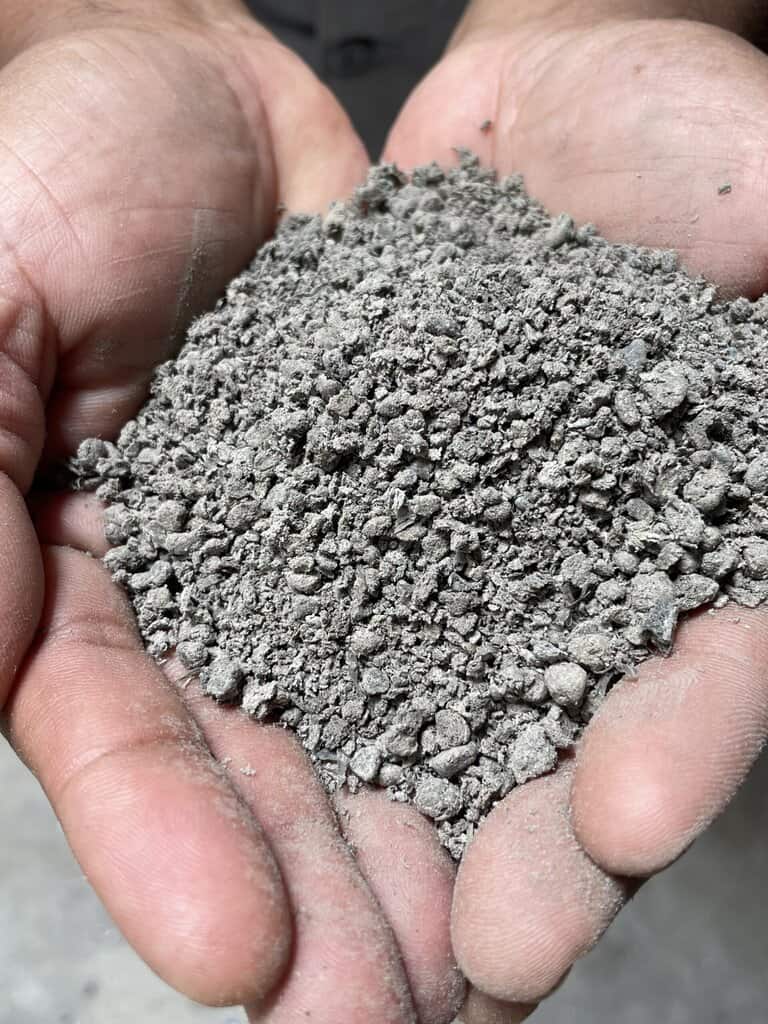CRDC transforms plastic waste to build South Africa
By Adrian Ephraim
CAPE Town’s looming landfill crisis and South Africa’s mounting plastic waste problem have set the stage for urgent innovation. While less than 10% of the world’s plastic waste is recycled, the remainder ends up incinerated, in landfills, or polluting rivers and oceans.
In South Africa, the recycling rate is slightly better at around 16%, thanks largely to informal waste collectors – but the bulk of plastic still escapes the recycling net.
Plastic waste innovation in South Africa
In response to this challenge, CRDC South Africa (Centre for Regenerative Design and Collaboration), led by CEO Abraham Avenant, has developed a breakthrough process to transform all types of plastic waste – dirty, mixed, and contaminated – into RESIN8™, a patented eco-aggregate that is incorporated into commonly used building materials, for example, bricks, pavers, kerbs and asphalt.
“The City of Cape Town has done a remarkable job putting the legislative framework in place with its Green Procurement Action Plan, its Supply Chain Management Policy, and its Waste Sector Strategy,” says Avenant. “The city has even included a green infrastructure clause in its standards and guidelines for roads and stormwater. The enabling framework exists. Now the challenge is implementation.”
Turning plastic waste into an eco-aggregate concrete
The CRDC recycling process granulates the plastic, which is then mixed with mineral additives and extruded into a hybrid mineral polymer aggregate. The process accepts all resins (1–7), inclusive of contaminated material from rivers and dumpsites. The coarse and open-cell structure of RESIN8 bonds mechanically and chemically with cement paste.
Independent studies, including research from Stellenbosch University, confirm that concrete products using RESIN8 meet or exceed applicable South African National Standards (SANS).
Projects in Cape Town that have already demonstrated RESIN8’s potential.
- Garden Cities diverted 1.1 tons of plastic waste in a pilot kerb project.
- Bitprop uses RESIN8 bricks in housing projects, keeping millions of chip packets out of landfill.
- The V&A Waterfront built the world’s first steel-reinforced concrete deck with RESIN8, diverting 2.4 tons of plastic – 1.2 million chip packets.
- The AZ Berman MyCity bus lane project in Mitchells Plain has already diverted 71 tonnes of plastic, saving 284 tonnes of natural aggregate.
“On a single 500-unit housing project, 204 tons of plastic waste will be diverted from landfill,” Avenant explains. “That’s 45 million chip packets. At the same time, reducing pressure on natural aggregate mining, transport emissions, and improving insulation of the homes being built.”
 Buying into a greener future
Buying into a greener future
The City of Cape Town has taken the lead by enabling green procurement in its policies; however, the uptake remains slow.
There is an economic benefit to using waste in construction materials that can be offset against waste management and
landfill budgets.
“We tell the City: yes, it may cost slightly more on your infrastructure budget, but you save significantly on your waste budget,” Avenant says. “It’s a small premium – less than 0.2% on a typical low-cost housing project – that delivers massive environmental, social, and long-term financial returns.”
CRDC’s model ensures that value is created across multiple economic sectors; waste management companies gain landfill alternatives for their clients, RESIN8 creates opportunities for concrete and asphalt companies to offer green materials and for end-users like property developers who want to increase their development’s green star ratings.
The company’s The Bag That Builds programme also integrates communities into the solution, rewarding schools and households for plastic collection while creating jobs and ensuring non-recyclables are put to use instead of being discarded in a landfill site.
Where to from here?
The next step is for all stakeholders – municipalities, developers, contractors, and private investors to move decisively from policy to practice. The City of Cape Town’s green procurement framework has already set the stage; now it’s time for action and scale.
“Our message is clear,” says Avenant. “The technology is tried, tested, and approved. The policies are aligned. What’s missing is the resolve to mandate green alternatives. The construction sector is large enough to divert tons of waste from landfill through the specification of various available green building materials.”